Heading on an all-inclusive cruise to the vibrant coasts of Mexico? You’re in for a treat! But there’s one vital question many travelers ask before setting sail: “Do I need a passport?”
Our guide aims to clear the fog, whether cruising for 3 days or 14, ensuring you embark on your journey fully informed and ready for the adventure that awaits. So, anchor’s away, and let’s dive into the details!

Basic Passport Facts
Sailing off into the horizon promises adventure, relaxation, and unforgettable memories.
But before you even step onto that cruise ship, there’s an essential piece of documentation that often becomes a point of confusion: the passport.
This brings us back to our central query, “do you need a passport for a Mexico cruise?” Let’s start by understanding the basics of a passport.
What is a Passport?
A passport is an official government document that verifies your identity and citizenship. It’s typically a small booklet with personal details, your photograph, and blank pages for visa stamps from other countries.
For many, a passport serves as a global ticket, allowing them to travel internationally.

How Long is it Valid?
For U.S. citizens, a regular adult passport remains valid for ten years, while a child’s passport (for those under 16) is valid for five years. Keeping an eye on the expiration date is crucial, especially when planning a cruise.
Often, some destinations might require your passport to have at least six months of validity beyond your planned return date.
Different Types of Passports
While the standard blue-covered passport is what most of us are familiar with, there are different types:
Regular Passport
The most common type, allowing leisure or business travel worldwide.
Official Passport
Issued to government employees for official travel.
Diplomatic Passport
Given to diplomatic agents and their families for official international missions.
Now that we’ve set the stage with some foundational knowledge, we can delve deeper into our primary concern: do you need a passport for a Mexico cruise?
As we progress, you’ll notice that while a passport is a universal key to international travel, certain nuances dictate its necessity when cruising to Mexico.

The Closed Loop Cruise Exception for Mexico Cruises
One of the reasons there’s so much confusion surrounding the question, of whether or not you need a passport for your Mexico cruise, lies in the concept of the “closed loop cruise”.
This term might sound complex, but we’ll break it down to make it as clear as the Caribbean waters.
What is a Closed Loop Cruise?
A closed loop cruise refers to a cruise that begins and ends in the same U.S. port.
For instance, if you embark on your cruise in Miami and return to Miami after visiting a few destinations, you’ve taken a closed loop cruise. Now, what does this mean for your travel documentation?

Passport Requirements for Closed Loop Cruises
Here’s where it gets interesting. U.S. citizens on closed loop cruises to cruise destinations like Mexico, Canada, the Caribbean, and Bermuda might not always need a passport to re-enter the U.S.
Instead, they can often use other proofs of citizenship, like a certified birth certificate and a government-issued photo ID.
However, while U.S. regulations might permit this, it’s crucial to remember that the countries you visit on your cruise, including Mexico, might have their own entry requirements.
This brings us back to the pressing question: do you need a passport for a Mexico cruise even if it’s a closed loop?
Mexico, as a country, generally expects travelers to have valid passports when entering. However, cruise ship passengers, especially on closed loop cruises, often fall under different, more relaxed, regulations.
Still, having a passport can expedite the process and ensure a smoother experience during your shore excursions.

The Advantages of Having a Passport on a Closed Loop Mexico Cruise
Even if not always required, there are multiple advantages to having a passport on your Mexico cruise:
- Flexibility: If you decide to extend your stay in Mexico or face an unforeseen circumstance that requires you to fly back to the U.S., a passport is mandatory.
- Simplicity: Simplify the embarkation and disembarkation process without the need to present multiple documents.
- Peace of Mind: Avoid any unexpected challenges or delays, ensuring your journey remains stress-free.
To reiterate, while you might navigate a closed loop cruise to Mexico without a passport, the advantages of having one are numerous.
It’s always best to stay informed and prepared, ensuring that the waves you encounter on your trip are only the pleasant ones by the beach.

Specific Passport Requirements for Mexico Cruises
Now that we’ve demystified the closed loop cruise exception, let’s get specific about Mexico. After all, the recurring question we’re trying to answer is, “do you need a passport for a Mexico cruise?”
The answer lies in understanding both the requirements set forth by the Mexican government and the policies of cruise lines.
Understanding Mexico’s Maritime Entry Requirements
Mexico, with its sun-soaked beaches, historical landmarks, and vibrant culture, is a sought-after destination.
But to ensure a smooth experience when setting foot on its shores, one must be well-acquainted with its entry requirements.
Passport Essentials
While U.S. citizens on closed loop cruises might sometimes rely on alternative documentation to re-enter the U.S., Mexico generally expects cruise passengers to possess valid passports.
This ensures ease of entry, especially if there are multiple ports of call within Mexico.
Tourist Card or Forma Migratoria Múltiple (FMM)
All visitors to Mexico, whether by land, air, or sea, need an FMM. Most cruise lines will assist passengers in securing this document as part of the travel package. It’s a simple form, but it’s essential for legal entry and exit.

Variations Based on Nationalities
While U.S. citizens have certain privileges due to close ties and agreements with Mexico, travelers from other countries might face different requirements.
It’s always recommended to check the specific entry conditions based on one’s nationality.
When a Passport Becomes Indispensable
Certain situations might necessitate a passport for cruise passengers, even if they’re on a closed loop cruise:
- Multiple Destinations: If your cruise is visiting several countries, other destinations might have stricter entry requirements.
- Extended Stays: Should you wish to disembark in Mexico and stay for a few days before catching a flight back home, a passport becomes essential.
- Emergencies: In unexpected situations where one might need to leave the cruise and return by air, a passport is mandatory for re-entry into the U.S.
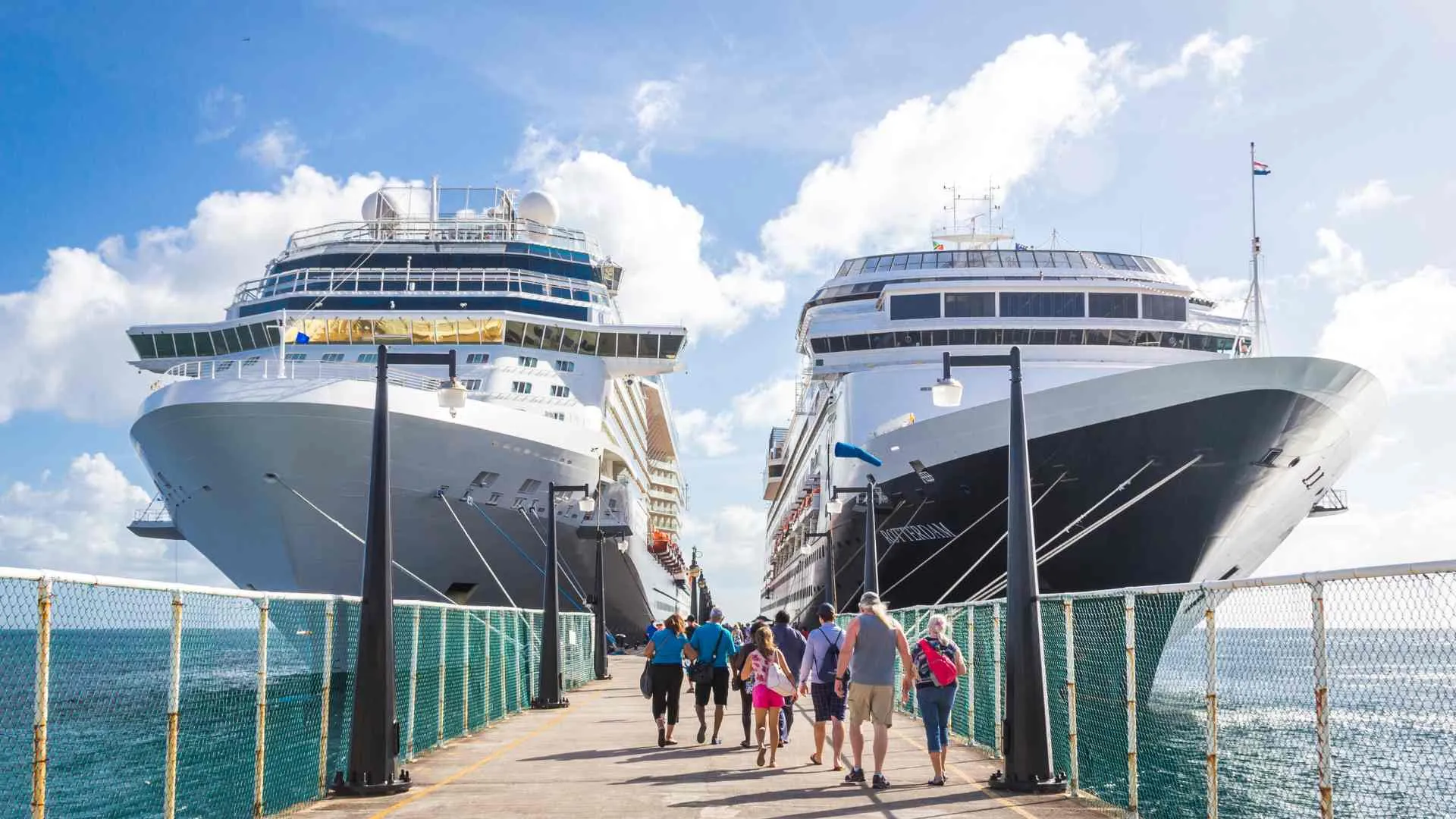
Aligning with Cruise Line Policies
Even if you’ve got the Mexican requirements down, don’t forget to check with your cruise line. They often have their own set of documentation policies for boarding, and these might be stricter than the destination country’s requirements.
Always best to be safe than sorry, especially when you’re looking forward to a relaxing vacation.
Summing it Up
So, do you need a passport for a Mexico cruise? While there are exceptions and nuances, the safest and most hassle-free answer leans towards “yes”.
A passport not only ensures smooth sailing (pun intended) but also gives you the freedom and flexibility that a vacation should offer.

The Importance of a Passport
Throughout this guide, we’ve touched upon various scenarios where a passport’s presence can influence the flow of your journey. Now, let’s take a moment to deep dive into why this small booklet holds so much weight.
When considering if you need a passport on your cruise to Mexico, understanding the broader significance of a passport can help travelers make well-informed decisions.
A Universal Key to Global Exploration
The beauty of a passport goes beyond its primary function as an identification document.
It’s your ticket to explore the world, bridging borders and opening doors to new experiences.
Seamless Travel
With a passport in hand, travelers can expect:
- Quick Entry and Exit: Breeze through immigration checks without the need for multiple identification verifications.
- Acceptance Worldwide: It’s a globally recognized document, ensuring its acceptance across countries.
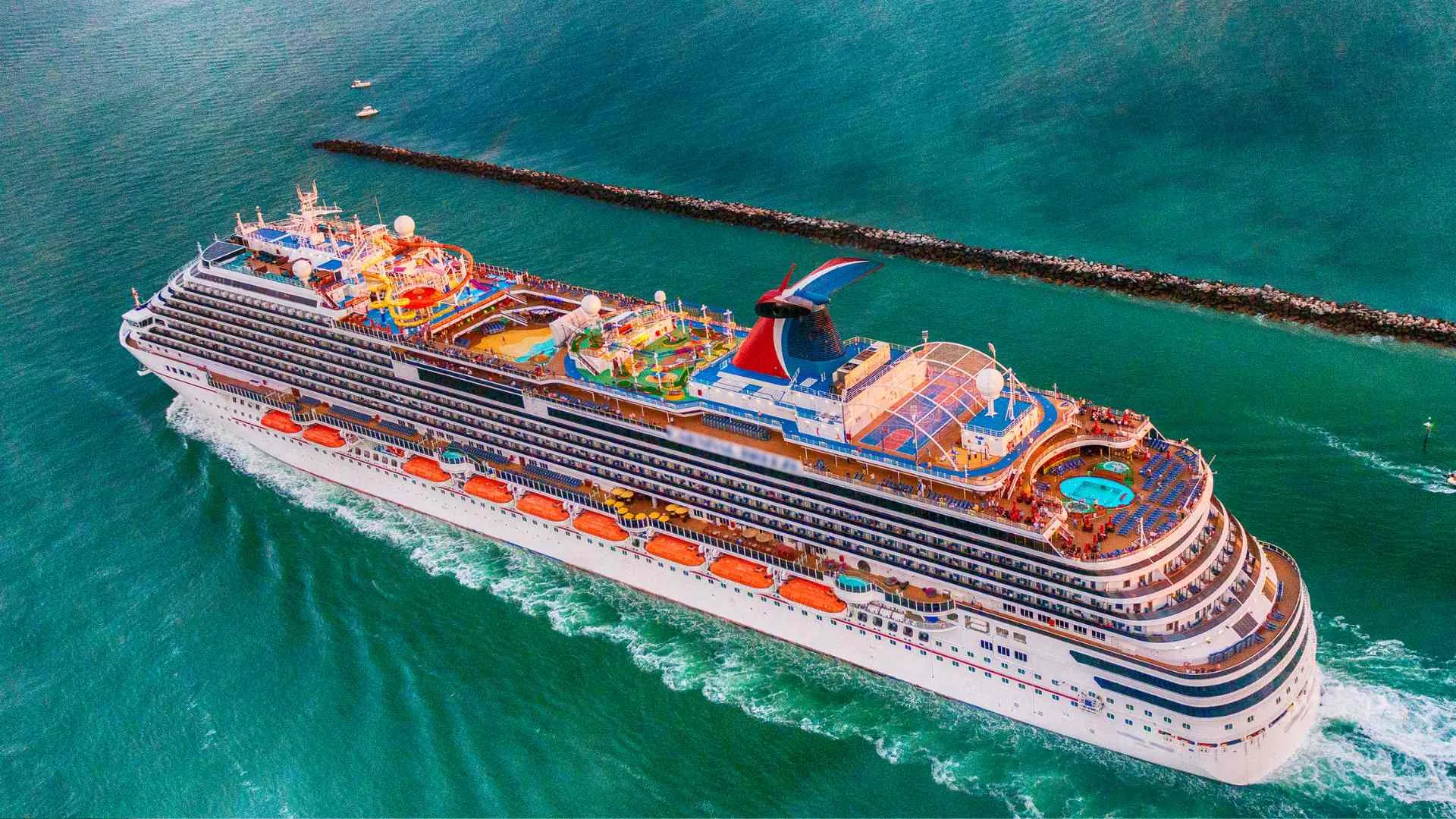
Preparing for the Unexpected
While we all hope for smooth travels, the unexpected can occur during your Mexico cruise. Here’s where a passport proves indispensable:
- Medical Emergencies: If you need to be airlifted back home or to another country for medical reasons, having a passport ensures you can move quickly without bureaucratic delays.
- Missed Departures: In case you miss the ship at a port of call and need to fly to the next destination or back home, a passport is essential.
- Lost or Stolen Documentation: If you lose other forms of identification, a passport can act as a backup, allowing you to continue your journey or return home without significant disruptions.

Freedom and Flexibility on the Go
Traveling is about freedom – the freedom to explore, to make spontaneous decisions, and to let the journey evolve organically.
A passport during your cruise to Mexico provides:
- Spontaneous Extended Stays: Loved a particular city in Mexico and wish to stay a little longer after the cruise ends? A passport allows that flexibility.
- Unplanned Trips to Nearby Countries: If your cruise has multiple stops, including countries other than Mexico, a passport ensures you can disembark and explore without a hitch.
Enhancing the Travel Experience
Beyond the practicalities, having a passport enhances the essence of travel:
- Collecting Memories: Those stamps aren’t just administrative marks; they’re badges of honor, tangible memories of your global adventures.
- Peace of Mind: Instead of worrying about documentation at every step, you can immerse yourself fully in the travel experience.
Passport Importance
While the question, “do you need a passport for a Mexico cruise?”, might have varying answers based on technicalities, the underlying theme is evident.
A passport is not just a piece of documentation; it’s a companion for the modern traveler, ensuring a journey that’s as seamless as it is memorable.
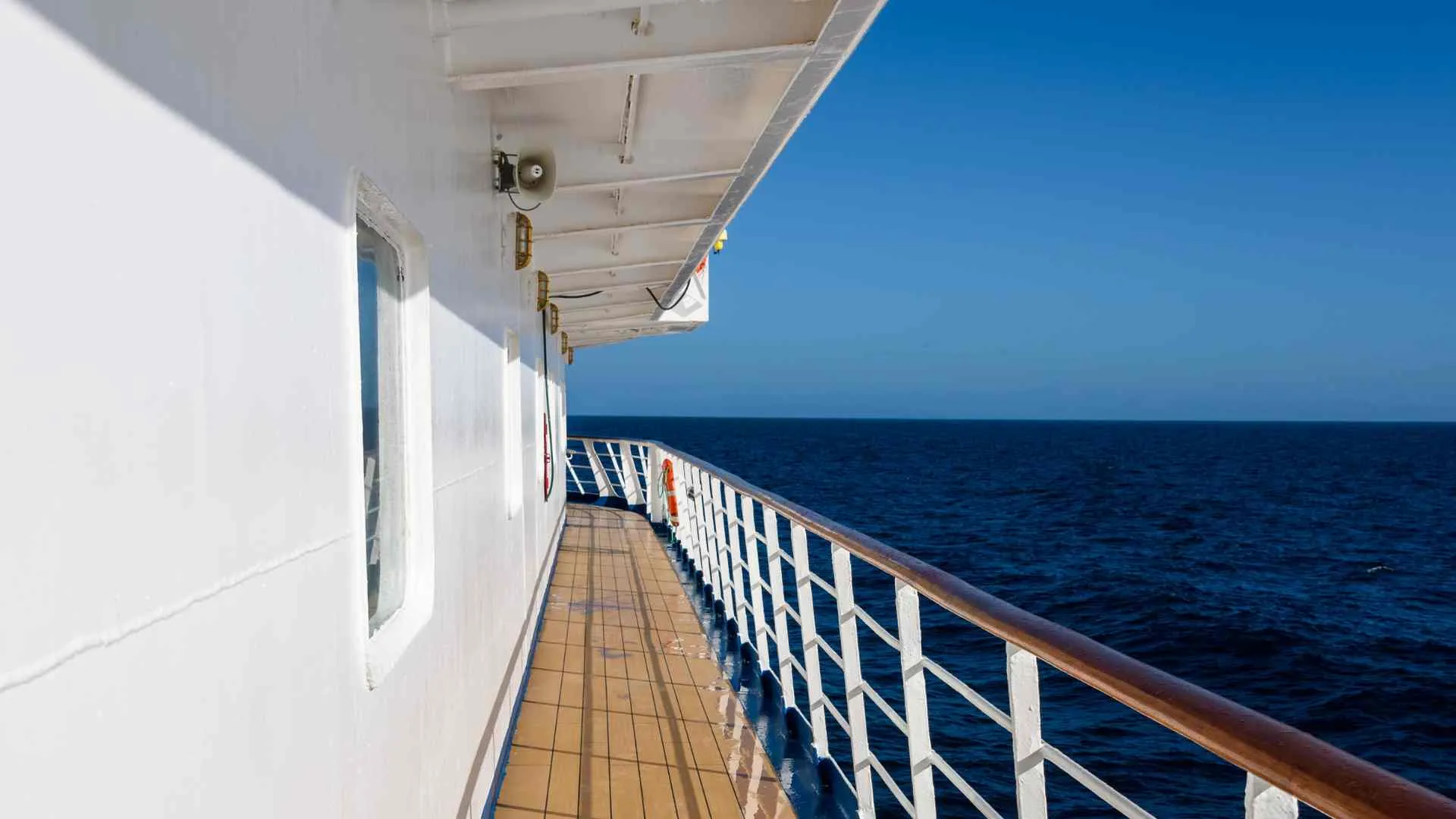
Alternatives to a Passport for U.S. Citizens on Closed Loop Cruises
While our guide has illuminated the immense advantages of having a passport, the unique nature of closed loop cruises offers U.S. citizens some flexibility.
If you’re still pondering the question, “do you need a passport for a Mexico cruise?”, and you’re sailing in a closed loop, there are alternative documents you might consider. Let’s delve into these options.
Enhanced Driver’s License (EDL)
An Enhanced Driver’s License provides proof of identity and U.S. citizenship.
Currently, only a few states offer EDLs, but for those who possess one, it can be used in lieu of a passport for land and sea entry into the U.S. from Canada, Mexico, and some parts of the Caribbean.
Key Features:
- Convenience: Acts as both a driver’s license and a travel document.
- RFID Chip: Contains a radio frequency identification chip, allowing for quicker border inspections.

Trusted Traveler Cards
These programs expedite the travel process for pre-approved, low-risk travelers.
SENTRI
Specifically designed for those frequently traveling between the U.S. and Mexico, the Secure Electronic Network for Travelers Rapid Inspection (SENTRI) card speeds up the border crossing process.
NEXUS
While primarily for travel between the U.S. and Canada, the NEXUS card can also be used for entry from Mexico and some Caribbean nations by sea.
FAST Card
The Free and Secure Trade (FAST) card is for commercial truck drivers, but it can double as an ID for re-entry into the U.S. from Mexico or Canada by sea.

U.S. Military Identification
Active members of the U.S. military on official orders can use their military ID in combination with their leave and earnings statement for entry into the U.S.
Birth Certificates for Minors
Children under the age of 16 traveling on closed loop cruises can often use a certified birth certificate as proof of citizenship when returning to the U.S. Similarly, groups of children aged 16 to 18 traveling with a school or other recognized organization may also use birth certificates.
Points to Remember:
- Country-Specific Requirements: While the above alternatives might be accepted for re-entry into the U.S., always check the entry requirements of the country or countries you’re visiting. Mexico, for instance, may still prefer a passport.
- Cruise Line Policies: Your cruise line might have its own documentation guidelines. Always confirm with them before setting sail.

Mexico’s Tourist Card (Forma Migratoria Múltiple)
Venturing further into the realm of Mexican-specific requirements, we come across the Forma Migratoria Múltiple, commonly known as the FMM or Mexico’s Tourist Card.
Even if the central question of “do you need a passport for a Mexico cruise?” has been addressed, understanding the FMM is equally pivotal for a hassle-free experience.
What is the Forma Migratoria Múltiple (FMM)?
The FMM is a government-issued travel document that grants tourists the authorization to visit Mexico for leisure, business, or transit purposes.
Key Details:
- Not a Visa: While often mistaken as a visa, the FMM is a tourist card required in addition to a passport or other accepted travel documents.
- Validity: Typically valid for up to 180 days for tourists, though the exact duration is at the discretion of the immigration officer.

When is the FMM Needed?
Any foreign visitor intending to stay in Mexico for more than seven days, or anyone traveling beyond the “free zone” (approximately 12 to 16 miles from the U.S.-Mexico border), needs an FMM.
This includes cruise ship passengers if their stay exceeds the stipulated period or if they plan to explore further inland.
Obtaining the FMM
The process is relatively straightforward, and for cruise passengers, it’s often even simpler.
Pre-Travel:
- Online Application: Travelers can apply for the FMM online before their journey, pay the fee, and print the card.
- Airports & Border Crossings: If traveling by air or land, FMM forms are usually available at ports of entry.
During Your Cruise:
Most cruise lines streamline the process for their passengers:
- Cruise Line Assistance: Often, cruise lines provide the FMM forms to passengers, assist in filling them out, and manage the submission and payment processes.
- In-Person Checks: At times, Mexican immigration officers may board the cruise ship to verify and stamp documents.

Costs and Potential Pitfalls
There’s a fee associated with the FMM, usually included in your flight or cruise ticket.
If not, ensure you pay it before leaving Mexico to avoid potential fines.
Beware:
- Retain Your FMM: Always keep your FMM safe during your stay. Losing it can complicate your exit process and may incur additional fees.
- Overstaying: Ensure you don’t exceed the granted duration on your FMM. Overstaying can result in fines or potential difficulties when re-entering Mexico in the future.
Wrapping Up the FMM
So, while the overarching query might be “do you need a passport for a Mexico cruise?”, it’s evident that understanding the nuances of the FMM is just as crucial.
This tourist card ensures you’re legally set to immerse yourself in all the wonders Mexico has to offer.
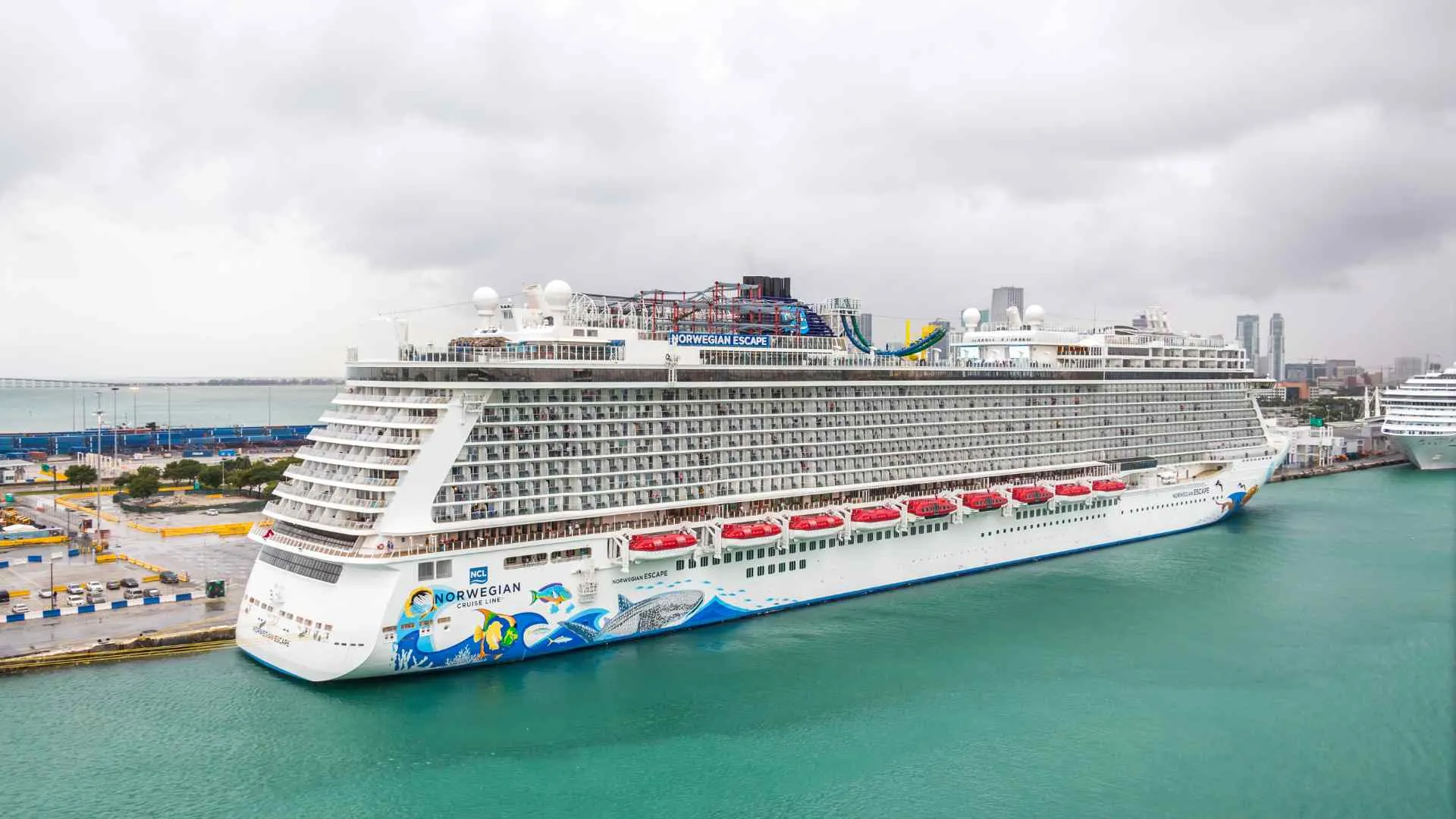
Understanding the Fine Print with Cruise Lines
Embarking on a journey to the vibrant locales of Mexico aboard a luxurious cruise liner is a dream for many.
But as the recurring theme “do you need a passport for a Mexico cruise?” has demonstrated, understanding the documentation is crucial.
Yet, there’s another layer to this: the fine print and policies of your chosen cruise line. It’s time to unravel that.
Cruise Lines: Autonomy and Responsibility
It’s essential to recognize that while cruise lines operate within international and national laws, they have a degree of autonomy in setting their policies.
Their primary aim? To ensure the safety, security, and smooth experience for all passengers aboard.

Passport Policies
Even if a destination country might technically permit alternative documentation, cruise lines might have a blanket policy requiring all passengers to possess valid passports.
This approach minimizes complications and potential disruptions during the journey.
Why this Matters:
- Multiple Ports of Call: Your cruise might have stops in various countries, each with its requirements.
- Emergency Diversions: In unforeseen circumstances, the ship might need to dock in an unplanned port where passport requirements might be stringent.

Booking and Pre-Travel Documentation Checks
When booking your cruise, the fine print will usually specify the required travel documents.
Most cruise lines also send reminders or offer checklists as the travel date approaches.
Tips for a Smooth Start:
- Early Verification: As soon as you book, cross-check the specified documentation requirements.
- Pre-Cruise Customer Service: If in doubt, contact the cruise line’s customer support for clarification.
Consequences of Non-Adherence
Ignoring the cruise line’s policies or missing the fine print can have ramifications:
- Denied Boarding: Without the stipulated documents, you might be denied boarding without a refund.
- Complications Ashore: Disembarking in Mexico or other ports without the required documentation can lead to fines, deportation, or being barred from reboarding.

Cruise-Specific Visa and Tourist Card Arrangements
Many cruise lines offer streamlined processes for visas or tourist cards like the FMM. They might:
- Facilitate Bulk Applications: Handle the FMM or visa process for all passengers collectively.
- Include Fees in Cruise Package: The costs associated with visas or tourist cards might be included in your cruise fare.
Emphasizing Insurance and Contingencies
In the world of cruises, unexpected situations, like route changes due to weather, can arise. Most cruise lines recommend:
- Travel Insurance: This can cover potential losses due to changes in itinerary, medical emergencies, or other unforeseen events.
- Documentation Preparedness: Even if not strictly required, having a passport ensures you’re equipped for last-minute changes in plans.
Summing Up the Cruise Fine Print
Returning to the central question – “do you need a passport for a Mexico cruise?” – it’s evident that while national regulations play a role, cruise line policies are equally, if not more, critical.
To ensure your journey is filled with spectacular sunsets, cultural experiences, and relaxation (rather than bureaucratic hassles), always read the fine print, stay informed, and when in doubt, opt for the gold standard: a valid passport.

Best Practices for Safekeeping Your Documentation on a Cruise
Your trip is all set, the bags are packed, and you’re ready to sail. However, amidst the excitement of a voyage, ensuring the safety of your crucial documents like passports, FMMs, or visas is paramount.
After diving into the depths of “do you need a passport for a Mexico cruise?”, it’s equally vital to discuss best practices for safeguarding these essential papers.
Why Safekeeping Matters
Before diving into the how-to, understanding the significance of safekeeping is crucial:
- Avoiding Travel Disruptions: Lost or stolen documents can lead to significant travel hiccups, be it missing a part of your cruise or getting stuck at a port.
- Preventing Identity Theft: Personal documents can be misused, leading to potential identity theft issues.

Utilizing On-Board Safes
Most modern cruise cabins come equipped with safes. It’s one of the best places to secure your vital documents.
Tips for Using Safes:
- Regular Checks: Ensure you remember the combination and regularly check to ensure all documents are in place.
- Final Day Reminder: Set a reminder for the last day of your cruise to retrieve all documents from the safe.
Going Digital with Backups
While physical documents are primary, having digital backups can be a lifesaver.
Steps to Digital Safety:
- Scan Important Documents: Before your trip, scan or take clear photos of your passport, ID, FMM, and other vital papers.
- Use Secure Cloud Storage: Platforms like Google Drive, Dropbox, or iCloud allow you to access these backups from anywhere.
- Offline Backups: Save copies on your smartphone or a secure USB drive, ensuring access even without the internet.
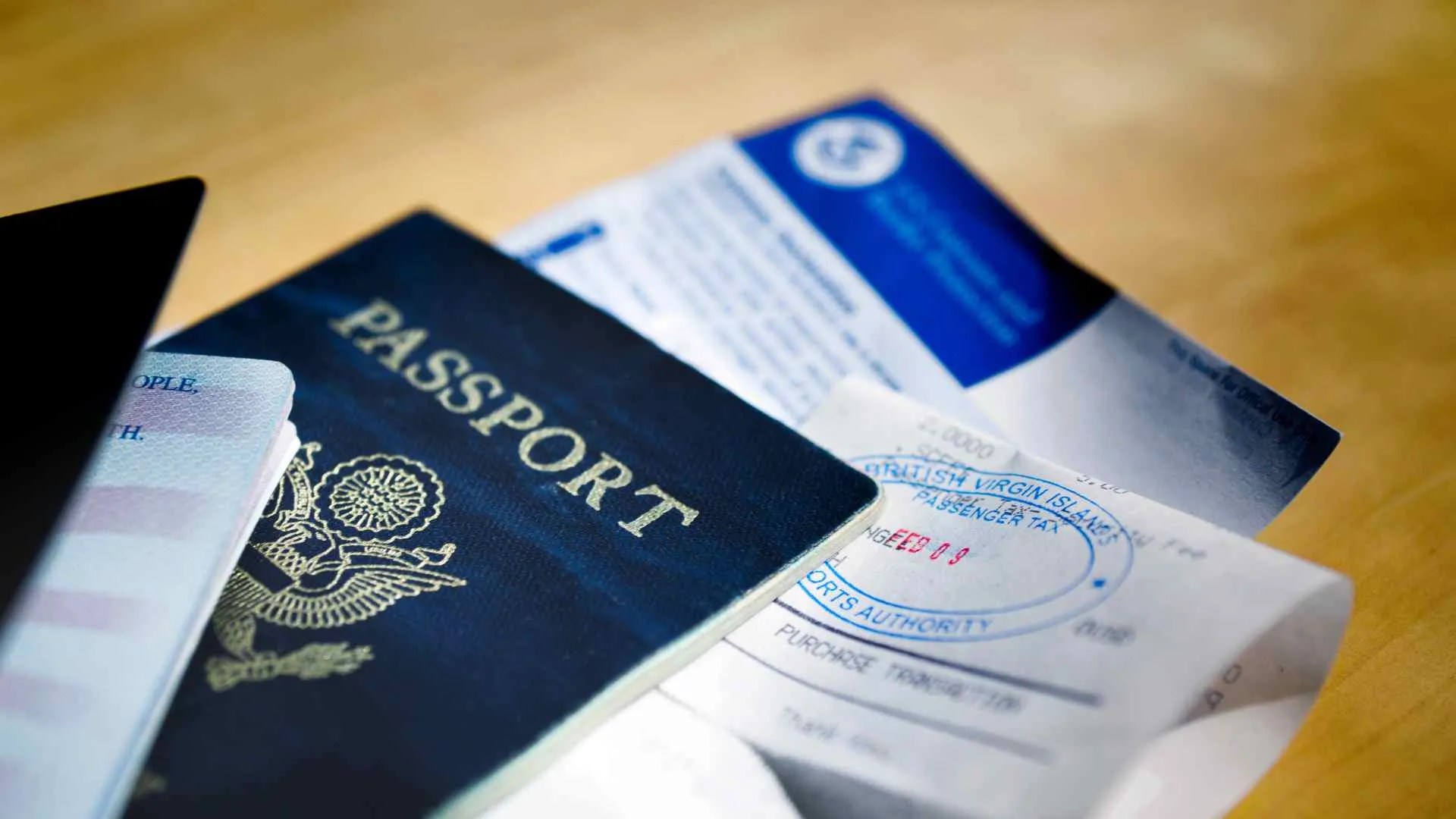
Keeping a Separate Copy
Along with your original documents and digital backups:
- Photocopy Essentials: Have a set of photocopies of your passport, travel insurance, and other necessary papers.
- Store Separately: Keep these copies in a separate bag or location from your original documents. If one set is misplaced, you have the other as backup.
Limit Exposure
When off the ship exploring Mexico or any other port:
- Take Only What’s Needed: If you don’t need your passport ashore, leave it securely on the ship.
- Use Travel Pouches: If you must carry original documents, use hidden travel pouches or money belts that stay concealed.

Immediate Action on Loss
If you realize you’ve lost a vital document:
- Notify Cruise Security: Inform the ship’s security personnel immediately.
- Local Authorities: If lost ashore, report to the local police.
- Embassy/Consulate Assistance: In case of a lost passport, contacting the nearest U.S. embassy or consulate can help expedite the process of obtaining temporary travel documents.
Prioritize Safety
While the joys of cruising revolve around relaxation, exploration, and adventure, the foundation of a smooth journey lies in the meticulous care of essential documents.

Tips for First-Time Cruise Goers to Mexico
For many, embarking on a cruise to Mexico is the epitome of a dream vacation. Azure waters, historic landmarks, tantalizing cuisine – it promises a melange of experiences.
And while we’ve extensively covered the documentation aspect with “do you need a passport for a Mexico cruise?”, first-timers often have a broader spectrum of questions. So, here are some insider tips to make that maiden voyage truly unforgettable.
1. Research Your Cruise Line and Ship
While this might sound basic, the kind of ship and cruise line you choose can greatly influence your experience.
- Size Matters: Larger ships offer a plethora of amenities but can be overwhelming, while smaller ones might provide a more intimate experience.
- Reputation: Read reviews, understand the target audience (some cater to families, others to couples or seniors), and choose accordingly.
2. Understand Your Itinerary
While the allure of Mexico is undeniable, knowing what’s in store can help you plan better.
- Port Stops: Research each stop to prioritize activities.
- On-Board Activities: From themed nights to onboard entertainment, stay informed to pack and participate accordingly.

3. Pack Smart
The trick lies in balancing essentials without overpacking.
- Cruise Attire: From casual wear to formal nights, ensure you’re equipped with the best cruise clothes!
- Shore Excursions: Remember to pack comfortable walking shoes, sun hats, or even snorkeling gear if you’re adventurous!
4. Stay Healthy
While cruises are about indulgence, it’s easy to go overboard.
- Dining Choices: With a plethora of dining options, balance out indulgent meals with healthier choices.
- Sanitize: Always sanitize or wash your hands, especially before meals, to avoid any onboard illnesses.

5. Dive into Cultural Etiquette
Mexico is rich in culture, and understanding local customs can enhance your interactions.
- Learn Basic Spanish: Simple phrases like “Hola” (Hello) or “Gracias” (Thank you) can go a long way.
- Respect Traditions: Whether it’s dressing modestly at religious sites or understanding local customs, a little respect can enhance your experience.
6. Manage Your Onboard Account
Most cruise ships operate on a cashless system onboard.
- Monitor Expenditure: Regularly check your account to keep track of expenses and avoid surprises.
- Tipping: Understand the cruise line’s tipping policy. Some include it in the fare; for others, you’ll need to budget separately.

7. Stay Connected but Disconnect
While it’s essential to stay connected, especially for emergencies, a cruise is also an opportunity to digitally detox.
- Wi-Fi Packages: If you must be online, check out the ship’s Wi-Fi packages.
- Embrace the Moment: Allow yourself to disconnect and soak in the beauty around you.
8. Plan Shore Excursions
While spontaneous adventures are great, a bit of planning ensures you don’t miss out.
- Book in Advance: Popular tours or activities might get sold out. Booking in advance guarantees a spot.
- Local Exploration: Sometimes, just wandering the local markets or beaches can be the most memorable experience.

9. Documentation Check
Looping back to our initial focus – ensure all your documents, be it passports, FMMs, or IDs, are in order. Make copies, use the ship’s safe, and always have a digital backup.
10. Relax and Enjoy
Finally, remember, this is your vacation. While the tips above ensure a smooth journey, the essence of a cruise lies in relaxation, exploration, and creating memories.

Renewing or Obtaining a Passport
While the romantic allure of cruising and the vibrant beauty of Mexico are tantalizing, the cornerstone of international travel remains – the passport.
Whether you’ve realized yours is nearing expiration or you’re looking to get one for the first time, understanding the process is vital.
1. Obtaining a Passport for the First Time
For those who’ve never owned a passport:
Step-by-Step Process:
- Fill Out Form DS-11: This is the “Application For A U.S. Passport”. Do not sign it until instructed by an acceptance agent.
- Prepare Evidence of U.S. Citizenship: This could be a certified birth certificate, a previously issued passport, or other approved documents.
- Show Photo Identification: A driver’s license, military ID, or other government-issued identification is acceptable.
- Get a Passport Photo: Ensure it meets the specific size and quality requirements.
- Calculate Fees: The cost will vary based on age and whether you’re getting a book, card, or both.
- Submit In Person: Head to a passport acceptance facility, like a post office or some public libraries, with all your materials.

2. Renewing Your Passport
For those whose passports are expired or about to:
Basic Guidelines:
- Adults: If you were 16 or older when your passport was issued and it was issued in the past 15 years, you can renew by mail using Form DS-82.
- Minors: Children under 16 cannot renew their passports; they must reapply using the DS-11 form.
Step-by-Step Process for Mail Renewal:
- Fill Out Form DS-82: The “U.S. Passport Renewal Application for Eligible Individuals”.
- Include Your Passport: Send your most recent passport.
- Add a Passport Photo: Adhering to the official guidelines.
- Calculate Fees: Typically, renewals have a different fee structure than new applications.
- Mail the Application: Use an envelope large enough to fit the form without folding and consider tracking for security.

3. Expedited Process for Urgent Situations
If you’ve got a cruise or travel date looming close:
Options for Faster Processing:
- Expedited Service: For an additional fee, this speeds up the processing time.
- Regional Passport Agency: If traveling within 2 weeks, make an appointment at one of these agencies for even quicker service.
- Private Expedite Services: There are private companies that, for a fee, can help speed up the passport issuance process.
4. Stay Updated
Regulations, forms, and fees can change. Always:
- Check the Official U.S. Department of State Website: This provides the most up-to-date information.
- Consider Renewing Early: Some countries require your passport to have several months of validity beyond your planned departure date.
In wrapping up this section, the essence is clear.
The broader understanding of passport acquisition and renewal ensures you’re always ready for new horizons, be it in Mexico or anywhere else the waves might take you.

Conclusion
Sailing to Mexico promises an experience filled with sun-kissed beaches, rich heritage, and tantalizing flavors. But as our comprehensive guide has highlighted, preparation is key.
Whether you’ve been contemplating “do you need a passport for a Mexico cruise?” or seeking tips for a seamless voyage, being informed is your first step to an unforgettable journey. Remember, travel is as much about the destinations you explore as it is about the peace of mind you carry with you.
So, with passport in hand (or safely stowed), let the Mexican waves beckon, and may your cruise be everything you’ve dreamt of and more.
FAQs on Do You Need a Passport for a Mexico Cruise
1. Can I use a birth certificate instead of a passport for my Mexico cruise?
Answer: Yes, for closed loop cruises (those that start and end at the same U.S. port), U.S. citizens can use a government-issued photo ID and a certified birth certificate. However, a passport is recommended for greater flexibility and convenience.
2. If I have a passport card, can it replace the passport book for a cruise to Mexico?
Answer: Yes, for sea travel, the U.S. passport card can be used for entries from Mexico, Canada, the Caribbean, and Bermuda. It’s not valid for international air travel, though.
3. How soon before my cruise should I apply for or renew my passport?
Answer: Ideally, start the process at least 3-4 months before your travel date. Remember, some countries require a passport to have several months of validity beyond your planned stay.
4. If I lose my passport while in Mexico, what should I do?
Answer: Report the loss immediately to the nearest U.S. embassy or consulate, local police, and your cruise line. They will guide you on obtaining a temporary passport to return to the U.S.
5. Does my child need a separate passport for the cruise?
Answer: Yes, all U.S. citizens, including infants, need a passport or accepted alternative documentation for international travel.
6. I’m not a U.S. citizen. How do I find out if I need a passport for a Mexico cruise?
Answer: While our guide is primarily focused on U.S. citizens, it’s crucial for non-U.S. citizens to check with their respective embassies, the Mexican consulate, and the cruise line for specific requirements.
7. Do all Mexico cruise ports have the same documentation requirements?
Answer: Generally, the entry requirements for cruise passengers remain consistent across Mexican ports. However, always confirm with your cruise line, as some itineraries with multiple country stops might have varying requirements.
8. What is the benefit of getting an Enhanced Driver’s License?
Answer: An Enhanced Driver’s License (EDL) acts as both a driver’s license and a travel document for land and sea entry into the U.S. from Mexico, Canada, and parts of the Caribbean. It offers a convenient alternative to the passport book for those eligible.
9. Are there any additional fees apart from the cruise ticket I should be aware of?
Answer: While many cruise lines include necessary fees, such as the FMM for Mexico, it’s essential to check in advance. There might be additional costs for visas, tourist cards, or port taxes.
10. If I have further questions about passport requirements, where should I go?
Answer: Always consult the official U.S. Department of State website for the most up-to-date and accurate information on passport requirements. Your cruise line’s customer service can also provide specific guidance tailored to your itinerary.
11. What happens if I miss my cruise departure? Do I need a passport to fly to the next port?
Answer: Yes, if you miss your cruise departure and need to fly internationally to catch up with the ship at its next port, you’ll require a passport. This emphasizes the importance of having one even if your cruise doesn’t mandatorily require it.
12. How secure are the safes in cruise ship cabins?
Answer: Cruise ship cabin safes are generally secure and are provided to ensure the safety of passengers’ valuables. However, as with all safes, it’s always wise to regularly check your belongings and report any discrepancies immediately.
13. Is there an age limit for kids to travel without a passport on a closed loop cruise?
Answer: Children under 16 traveling on closed loop cruises can use a certified birth certificate instead of a passport. Teens aged 16-18, when traveling with a school or recognized organization, might also use birth certificates, but it’s always best to check with the cruise line for specific policies.
14. I have a criminal record. Will that affect my ability to go on a cruise to Mexico?
Answer: While the passport process doesn’t typically restrict individuals with a criminal record, certain countries might have entry restrictions based on criminal history. It’s advisable to check with both the cruise line and the Mexican consulate.
15. Can I use my Real ID instead of a passport for the cruise?
Answer: No, the Real ID, while useful for domestic flights and federal purposes within the U.S., is not an acceptable substitute for a passport for international travel, including cruises.
16. How long does the expedited passport process usually take?
Answer: The expedited passport process, for an additional fee, typically takes about 4-6 weeks, though it can be faster in urgent situations. If you’re traveling within 2 weeks, consider making an appointment at a regional passport agency for quicker service.
17. Does the name on my cruise booking need to match the name on my passport?
Answer: Yes, the name on your cruise booking should match the name on your passport. Discrepancies can lead to complications during boarding or at ports of entry.
18. If I’m on a back-to-back cruise that starts and ends in the U.S. but has different ships, is it still considered a closed loop cruise?
Answer: No, a closed loop cruise is defined as one that begins and ends at the same U.S. port on the same ship. If you’re switching ships, it might not qualify as a closed loop, and a passport is recommended.
19. I have dual citizenship. Which passport should I use for my cruise to Mexico?
Answer: If one of your nationalities is U.S., use that passport when departing and entering the U.S. When entering Mexico, you can use either, but it’s often simpler to use the same passport for the entire journey.
20. Are there any vaccinations I need before cruising to Mexico?
Answer: While no specific vaccinations are mandatory for Mexico, it’s always good to check with the Centers for Disease Control and Prevention (CDC) for any recommended vaccines or health precautions.
